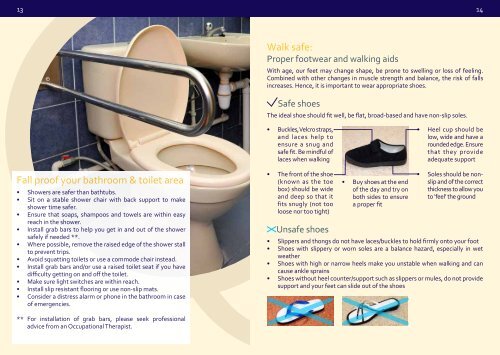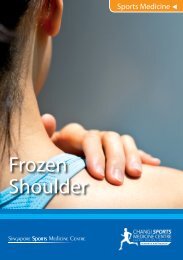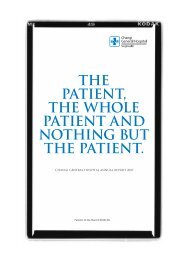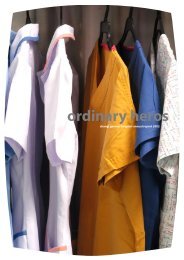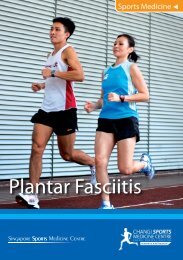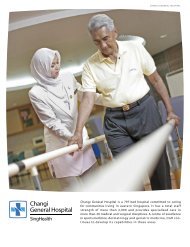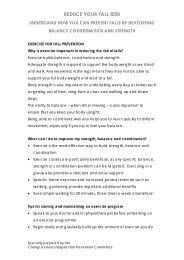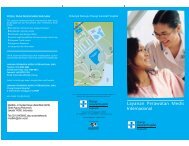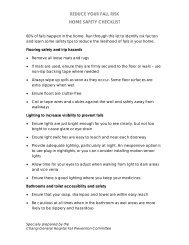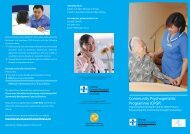Fall Prevention Brochure - Changi General Hospital
Fall Prevention Brochure - Changi General Hospital
Fall Prevention Brochure - Changi General Hospital
Create successful ePaper yourself
Turn your PDF publications into a flip-book with our unique Google optimized e-Paper software.
13<br />
14<br />
Walk safe:<br />
Proper footwear and walking aids<br />
With age, our feet may change shape, be prone to swelling or loss of feeling.<br />
Combined with other changes in muscle strength and balance, the risk of falls<br />
increases. Hence, it is important to wear appropriate shoes.<br />
Safe shoes<br />
The ideal shoe should fit well, be flat, broad-based and have non-slip soles.<br />
• Buckles, Velcro straps,<br />
and laces help to<br />
ensure a snug and<br />
safe fit. Be mindful of<br />
laces when walking<br />
• Heel cup should be<br />
low, wide and have a<br />
rounded edge. Ensure<br />
that they provide<br />
adequate support<br />
<strong>Fall</strong> proof your bathroom & toilet area<br />
• Showers are safer than bathtubs.<br />
• Sit on a stable shower chair with back support to make<br />
shower time safer.<br />
• Ensure that soaps, shampoos and towels are within easy<br />
reach in the shower.<br />
• Install grab bars to help you get in and out of the shower<br />
safely if needed **.<br />
• Where possible, remove the raised edge of the shower stall<br />
to prevent trips.<br />
• Avoid squatting toilets or use a commode chair instead.<br />
• Install grab bars and/or use a raised toilet seat if you have<br />
difficulty getting on and off the toilet.<br />
• Make sure light switches are within reach.<br />
• Install slip resistant flooring or use non-slip mats.<br />
• Consider a distress alarm or phone in the bathroom in case<br />
of emergencies.<br />
• The front of the shoe<br />
(known as the toe<br />
box) should be wide<br />
and deep so that it<br />
fits snugly (not too<br />
loose nor too tight)<br />
Unsafe shoes<br />
• Buy shoes at the end<br />
of the day and try on<br />
both sides to ensure<br />
a proper fit<br />
• Soles should be nonslip<br />
and of the correct<br />
thickness to allow you<br />
to ‘feel’ the ground<br />
• Slippers and thongs do not have laces/buckles to hold firmly onto your foot<br />
• Shoes with slippery or worn soles are a balance hazard, especially in wet<br />
weather<br />
• Shoes with high or narrow heels make you unstable when walking and can<br />
cause ankle sprains<br />
• Shoes without heel counter/support such as slippers or mules, do not provide<br />
support and your feet can slide out of the shoes<br />
** For installation of grab bars, please seek professional<br />
advice from an Occupational Therapist.


